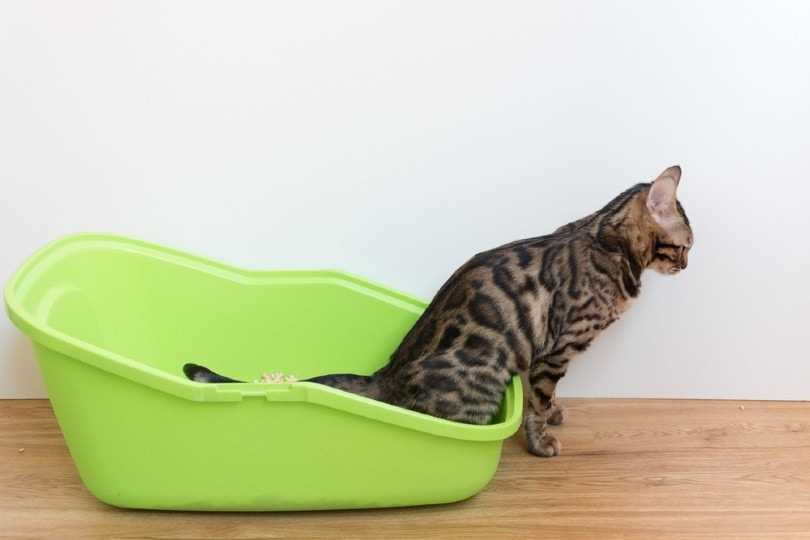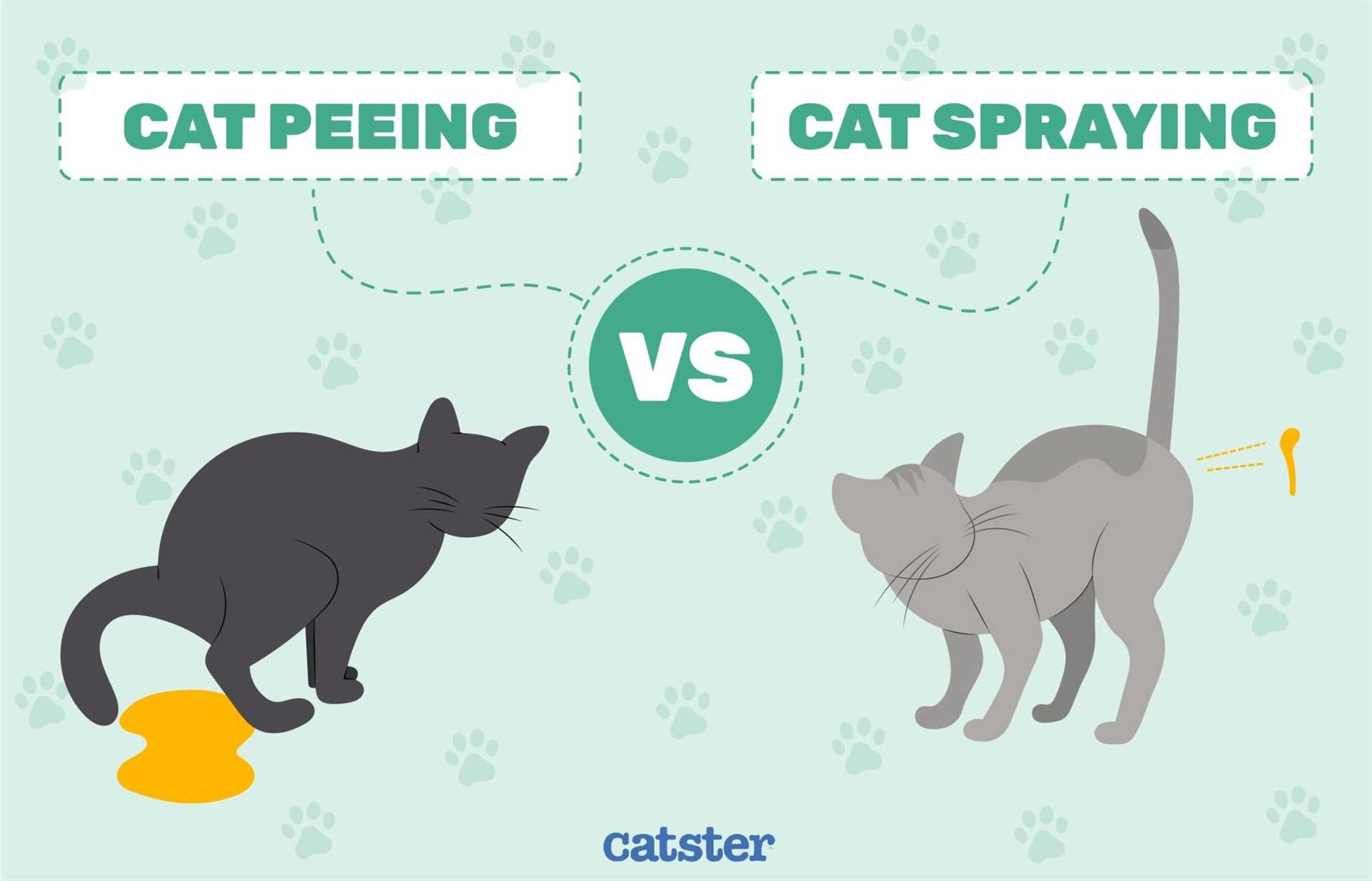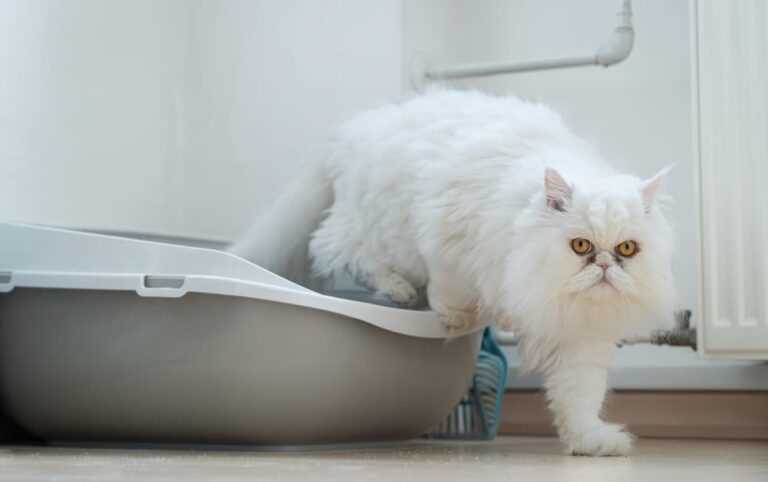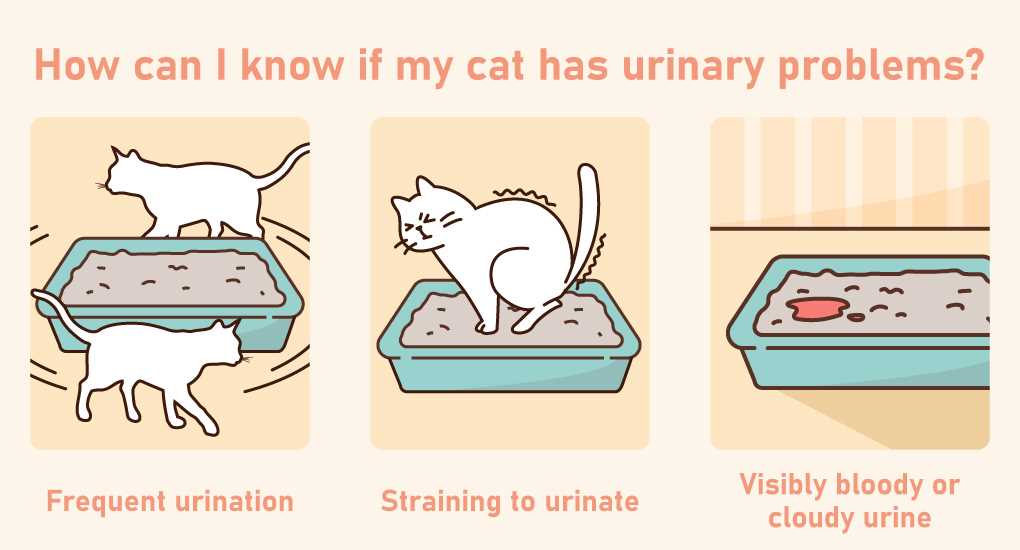As an 8-year-old Scottish Fold, I often hear questions about how often I visit my litter box. Typically, I make my way there about 2 to 4 times a day. This frequency can vary based on what I’ve eaten, how much water I’ve drank, and even my mood.
It’s interesting to note that hydration plays a significant role in this routine. A well-hydrated feline will naturally need to relieve himself more often. If my diet consists of wet food, for example, I may find myself making more frequent trips than if I feast on dry kibble. Keeping an eye on my water intake is just as important.
Moreover, the environment can influence my habits. Stressful situations or changes in my surroundings might lead to less frequent visits, while a comfortable and familiar space encourages regular bathroom breaks. Understanding these factors can help my human friends ensure that I’m healthy and happy.
Urination Patterns
I usually take a trip to my litter box around 2 to 4 times a day. This varies based on what I eat and how much water I drink. A well-hydrated feline like me tends to have more frequent visits, while a dry food diet can lead to less activity in that area.
If my human notices I’m going less often, it might be a sign to check my water intake or the quality of my food. Staying hydrated is key, so I recommend always having fresh water available. If I’m not drinking enough, my visits to the box may decrease, leading to potential health issues.
Observing my behavior is important too. If I seem to be straining or if there’s any change in the usual routine, it’s time for a vet visit. I may not like it, but it’s better to be safe than sorry!
Understanding Normal Urination Patterns in Cats

As a Scottish Fold, I know a thing or two about bathroom habits. Generally, my buddies and I tend to relieve ourselves around 2 to 4 times a day. This can vary based on factors like age, diet, and hydration levels. A well-balanced diet with plenty of water ensures that our systems function smoothly.
Signs of Healthy Function
Pay attention to your feline friend’s behavior. Normal elimination is usually characterized by a steady stream of urine without straining or discomfort. If you notice any changes, like increased frequency or difficulty, it might be time to consult a vet. Regular monitoring helps keep track of any potential issues.
Impact of Diet

The food we munch on plays a significant role in our hydration and bathroom habits. Wet food can lead to more frequent trips, while dry kibble might result in less. Always ensure fresh water is available to support a healthy routine. Staying hydrated is key to keeping everything flowing smoothly!
Factors Influencing a Cat’s Urination Frequency
Age plays a significant role in how often I relieve myself. Kittens tend to go more often than adults, while older felines may display changes in their habits due to health issues. Regular vet check-ups are crucial to monitor any shifts in behavior.
Diet is another critical factor. A high-moisture food, like wet kibble or canned options, leads to increased fluid intake, resulting in more frequent trips to the litter box. Conversely, a dry diet may lead to less frequent bathroom breaks.
Hydration Levels

Access to fresh water directly impacts my hydration. If my water bowl is empty or not clean, I might not drink enough. This can lead to concentrated urine and potentially less frequent visits to my litter box. It’s essential to keep my water source appealing and full.
Health Conditions
Medical issues can significantly alter urination patterns. Conditions such as urinary tract infections, diabetes, or kidney disease might cause increased urgency or frequency. If I notice changes, it’s important for my human to consult a veterinarian promptly to rule out any serious concerns.
When to Consult a Veterinarian About Urination Issues
If there’s a noticeable change in my peeing habits, it’s time to seek help from a vet. This includes situations like going more often than usual, straining to relieve myself, or blood appearing in my urine. These signs can indicate underlying health problems that need immediate attention.
Key Signs to Watch For
- Increased frequency of trips to the litter box.
- Straining or difficulty during the process.
- Blood or unusual color in urine.
- Strong or foul odor in urine.
- Changes in appetite or behavior, such as lethargy or not eating.
For instance, if I’m feeling sluggish and not interested in food, it might be related to urinary issues. In such cases, you can read more about it in this article on why is my cat not eating and lethargic.
Other Considerations

Some medical conditions may also lead to unusual urination patterns. If I’ve recently started a new diet or medication, that could affect my habits as well. For example, if you’re wondering about adding fiber to my diet, check out this link on whether you can give my cat metamucil.
Being vigilant about these symptoms will help ensure I stay healthy and happy. Remember, it’s always better to be safe and consult a vet for any concerns!
FAQ:
How often do cats typically urinate in a day?
Cats usually urinate between two to four times a day, depending on factors like their diet, hydration, and health. If a cat is well-hydrated and eats wet food, it may urinate more frequently. Conversely, cats that eat dry food or have lower water intake may urinate less often. Monitoring your cat’s routine can help you identify any changes that may indicate health issues.
What factors can influence how frequently a cat urinates?
Several factors can affect a cat’s urination frequency. Diet plays a significant role; cats that consume wet food tend to drink more water and urinate more often. Health conditions, such as urinary tract infections or diabetes, can also increase urination. Stress and environmental changes can lead to behavioral changes in urination patterns as well. If you notice any unusual changes in your cat’s urination habits, consulting a veterinarian is advisable.
Is it normal for a cat to urinate outside the litter box?
While occasional accidents can happen, frequent urination outside the litter box is usually a sign of an underlying issue. It could be due to stress, territorial behavior, or medical problems like urinary tract infections or kidney disease. If your cat is consistently urinating outside the box, it’s important to assess their environment and consult a veterinarian to rule out any health concerns.
How can I tell if my cat is urinating too much or too little?
To determine if your cat’s urination is excessive or insufficient, keep track of their bathroom habits. If your cat is urinating more than four to five times a day or has noticeably larger clumps in the litter box, it may be excessive. On the other hand, if your cat is urinating less than twice a day or seems to be straining, it could indicate a problem. Changes in urination patterns can be signs of health issues, so it’s best to consult a veterinarian if you have concerns.
As an 8-year-old Scottish Fold, I often hear questions about how often I visit my litter box. Typically, I make my way there about 2 to 4 times a day. This frequency can vary based on what I’ve eaten, how much water I’ve drank, and even my mood.
It’s interesting to note that hydration plays a significant role in this routine. A well-hydrated feline will naturally need to relieve himself more often. If my diet consists of wet food, for example, I may find myself making more frequent trips than if I feast on dry kibble. Keeping an eye on my water intake is just as important.
Moreover, the environment can influence my habits. Stressful situations or changes in my surroundings might lead to less frequent visits, while a comfortable and familiar space encourages regular bathroom breaks. Understanding these factors can help my human friends ensure that I’m healthy and happy.
Urination Patterns
I usually take a trip to my litter box around 2 to 4 times a day. This varies based on what I eat and how much water I drink. A well-hydrated feline like me tends to have more frequent visits, while a dry food diet can lead to less activity in that area.
If my human notices I’m going less often, it might be a sign to check my water intake or the quality of my food. Staying hydrated is key, so I recommend always having fresh water available. If I’m not drinking enough, my visits to the box may decrease, leading to potential health issues.
Observing my behavior is important too. If I seem to be straining or if there’s any change in the usual routine, it’s time for a vet visit. I may not like it, but it’s better to be safe than sorry!
Understanding Normal Urination Patterns in Cats

As a Scottish Fold, I know a thing or two about bathroom habits. Generally, my buddies and I tend to relieve ourselves around 2 to 4 times a day. This can vary based on factors like age, diet, and hydration levels. A well-balanced diet with plenty of water ensures that our systems function smoothly.
Signs of Healthy Function
Pay attention to your feline friend’s behavior. Normal elimination is usually characterized by a steady stream of urine without straining or discomfort. If you notice any changes, like increased frequency or difficulty, it might be time to consult a vet. Regular monitoring helps keep track of any potential issues.
Impact of Diet

The food we munch on plays a significant role in our hydration and bathroom habits. Wet food can lead to more frequent trips, while dry kibble might result in less. Always ensure fresh water is available to support a healthy routine. Staying hydrated is key to keeping everything flowing smoothly!
Factors Influencing a Cat’s Urination Frequency
Age plays a significant role in how often I relieve myself. Kittens tend to go more often than adults, while older felines may display changes in their habits due to health issues. Regular vet check-ups are crucial to monitor any shifts in behavior.
Diet is another critical factor. A high-moisture food, like wet kibble or canned options, leads to increased fluid intake, resulting in more frequent trips to the litter box. Conversely, a dry diet may lead to less frequent bathroom breaks.
Hydration Levels

Access to fresh water directly impacts my hydration. If my water bowl is empty or not clean, I might not drink enough. This can lead to concentrated urine and potentially less frequent visits to my litter box. It’s essential to keep my water source appealing and full.
Health Conditions
Medical issues can significantly alter urination patterns. Conditions such as urinary tract infections, diabetes, or kidney disease might cause increased urgency or frequency. If I notice changes, it’s important for my human to consult a veterinarian promptly to rule out any serious concerns.
When to Consult a Veterinarian About Urination Issues
If there’s a noticeable change in my peeing habits, it’s time to seek help from a vet. This includes situations like going more often than usual, straining to relieve myself, or blood appearing in my urine. These signs can indicate underlying health problems that need immediate attention.
Key Signs to Watch For
- Increased frequency of trips to the litter box.
- Straining or difficulty during the process.
- Blood or unusual color in urine.
- Strong or foul odor in urine.
- Changes in appetite or behavior, such as lethargy or not eating.
For instance, if I’m feeling sluggish and not interested in food, it might be related to urinary issues. In such cases, you can read more about it in this article on why is my cat not eating and lethargic.
Other Considerations

Some medical conditions may also lead to unusual urination patterns. If I’ve recently started a new diet or medication, that could affect my habits as well. For example, if you’re wondering about adding fiber to my diet, check out this link on whether you can give my cat metamucil.
Being vigilant about these symptoms will help ensure I stay healthy and happy. Remember, it’s always better to be safe and consult a vet for any concerns!
FAQ:
How often do cats typically urinate in a day?
Cats usually urinate between two to four times a day, depending on factors like their diet, hydration, and health. If a cat is well-hydrated and eats wet food, it may urinate more frequently. Conversely, cats that eat dry food or have lower water intake may urinate less often. Monitoring your cat’s routine can help you identify any changes that may indicate health issues.
What factors can influence how frequently a cat urinates?
Several factors can affect a cat’s urination frequency. Diet plays a significant role; cats that consume wet food tend to drink more water and urinate more often. Health conditions, such as urinary tract infections or diabetes, can also increase urination. Stress and environmental changes can lead to behavioral changes in urination patterns as well. If you notice any unusual changes in your cat’s urination habits, consulting a veterinarian is advisable.
Is it normal for a cat to urinate outside the litter box?
While occasional accidents can happen, frequent urination outside the litter box is usually a sign of an underlying issue. It could be due to stress, territorial behavior, or medical problems like urinary tract infections or kidney disease. If your cat is consistently urinating outside the box, it’s important to assess their environment and consult a veterinarian to rule out any health concerns.
How can I tell if my cat is urinating too much or too little?
To determine if your cat’s urination is excessive or insufficient, keep track of their bathroom habits. If your cat is urinating more than four to five times a day or has noticeably larger clumps in the litter box, it may be excessive. On the other hand, if your cat is urinating less than twice a day or seems to be straining, it could indicate a problem. Changes in urination patterns can be signs of health issues, so it’s best to consult a veterinarian if you have concerns.
As an 8-year-old Scottish Fold, I often hear questions about how often I visit my litter box. Typically, I make my way there about 2 to 4 times a day. This frequency can vary based on what I’ve eaten, how much water I’ve drank, and even my mood.
It’s interesting to note that hydration plays a significant role in this routine. A well-hydrated feline will naturally need to relieve himself more often. If my diet consists of wet food, for example, I may find myself making more frequent trips than if I feast on dry kibble. Keeping an eye on my water intake is just as important.
Moreover, the environment can influence my habits. Stressful situations or changes in my surroundings might lead to less frequent visits, while a comfortable and familiar space encourages regular bathroom breaks. Understanding these factors can help my human friends ensure that I’m healthy and happy.
Urination Patterns
I usually take a trip to my litter box around 2 to 4 times a day. This varies based on what I eat and how much water I drink. A well-hydrated feline like me tends to have more frequent visits, while a dry food diet can lead to less activity in that area.
If my human notices I’m going less often, it might be a sign to check my water intake or the quality of my food. Staying hydrated is key, so I recommend always having fresh water available. If I’m not drinking enough, my visits to the box may decrease, leading to potential health issues.
Observing my behavior is important too. If I seem to be straining or if there’s any change in the usual routine, it’s time for a vet visit. I may not like it, but it’s better to be safe than sorry!
Understanding Normal Urination Patterns in Cats

As a Scottish Fold, I know a thing or two about bathroom habits. Generally, my buddies and I tend to relieve ourselves around 2 to 4 times a day. This can vary based on factors like age, diet, and hydration levels. A well-balanced diet with plenty of water ensures that our systems function smoothly.
Signs of Healthy Function
Pay attention to your feline friend’s behavior. Normal elimination is usually characterized by a steady stream of urine without straining or discomfort. If you notice any changes, like increased frequency or difficulty, it might be time to consult a vet. Regular monitoring helps keep track of any potential issues.
Impact of Diet

The food we munch on plays a significant role in our hydration and bathroom habits. Wet food can lead to more frequent trips, while dry kibble might result in less. Always ensure fresh water is available to support a healthy routine. Staying hydrated is key to keeping everything flowing smoothly!
Factors Influencing a Cat’s Urination Frequency
Age plays a significant role in how often I relieve myself. Kittens tend to go more often than adults, while older felines may display changes in their habits due to health issues. Regular vet check-ups are crucial to monitor any shifts in behavior.
Diet is another critical factor. A high-moisture food, like wet kibble or canned options, leads to increased fluid intake, resulting in more frequent trips to the litter box. Conversely, a dry diet may lead to less frequent bathroom breaks.
Hydration Levels

Access to fresh water directly impacts my hydration. If my water bowl is empty or not clean, I might not drink enough. This can lead to concentrated urine and potentially less frequent visits to my litter box. It’s essential to keep my water source appealing and full.
Health Conditions
Medical issues can significantly alter urination patterns. Conditions such as urinary tract infections, diabetes, or kidney disease might cause increased urgency or frequency. If I notice changes, it’s important for my human to consult a veterinarian promptly to rule out any serious concerns.
When to Consult a Veterinarian About Urination Issues
If there’s a noticeable change in my peeing habits, it’s time to seek help from a vet. This includes situations like going more often than usual, straining to relieve myself, or blood appearing in my urine. These signs can indicate underlying health problems that need immediate attention.
Key Signs to Watch For
- Increased frequency of trips to the litter box.
- Straining or difficulty during the process.
- Blood or unusual color in urine.
- Strong or foul odor in urine.
- Changes in appetite or behavior, such as lethargy or not eating.
For instance, if I’m feeling sluggish and not interested in food, it might be related to urinary issues. In such cases, you can read more about it in this article on why is my cat not eating and lethargic.
Other Considerations

Some medical conditions may also lead to unusual urination patterns. If I’ve recently started a new diet or medication, that could affect my habits as well. For example, if you’re wondering about adding fiber to my diet, check out this link on whether you can give my cat metamucil.
Being vigilant about these symptoms will help ensure I stay healthy and happy. Remember, it’s always better to be safe and consult a vet for any concerns!
FAQ:
How often do cats typically urinate in a day?
Cats usually urinate between two to four times a day, depending on factors like their diet, hydration, and health. If a cat is well-hydrated and eats wet food, it may urinate more frequently. Conversely, cats that eat dry food or have lower water intake may urinate less often. Monitoring your cat’s routine can help you identify any changes that may indicate health issues.
What factors can influence how frequently a cat urinates?
Several factors can affect a cat’s urination frequency. Diet plays a significant role; cats that consume wet food tend to drink more water and urinate more often. Health conditions, such as urinary tract infections or diabetes, can also increase urination. Stress and environmental changes can lead to behavioral changes in urination patterns as well. If you notice any unusual changes in your cat’s urination habits, consulting a veterinarian is advisable.
Is it normal for a cat to urinate outside the litter box?
While occasional accidents can happen, frequent urination outside the litter box is usually a sign of an underlying issue. It could be due to stress, territorial behavior, or medical problems like urinary tract infections or kidney disease. If your cat is consistently urinating outside the box, it’s important to assess their environment and consult a veterinarian to rule out any health concerns.
How can I tell if my cat is urinating too much or too little?
To determine if your cat’s urination is excessive or insufficient, keep track of their bathroom habits. If your cat is urinating more than four to five times a day or has noticeably larger clumps in the litter box, it may be excessive. On the other hand, if your cat is urinating less than twice a day or seems to be straining, it could indicate a problem. Changes in urination patterns can be signs of health issues, so it’s best to consult a veterinarian if you have concerns.







